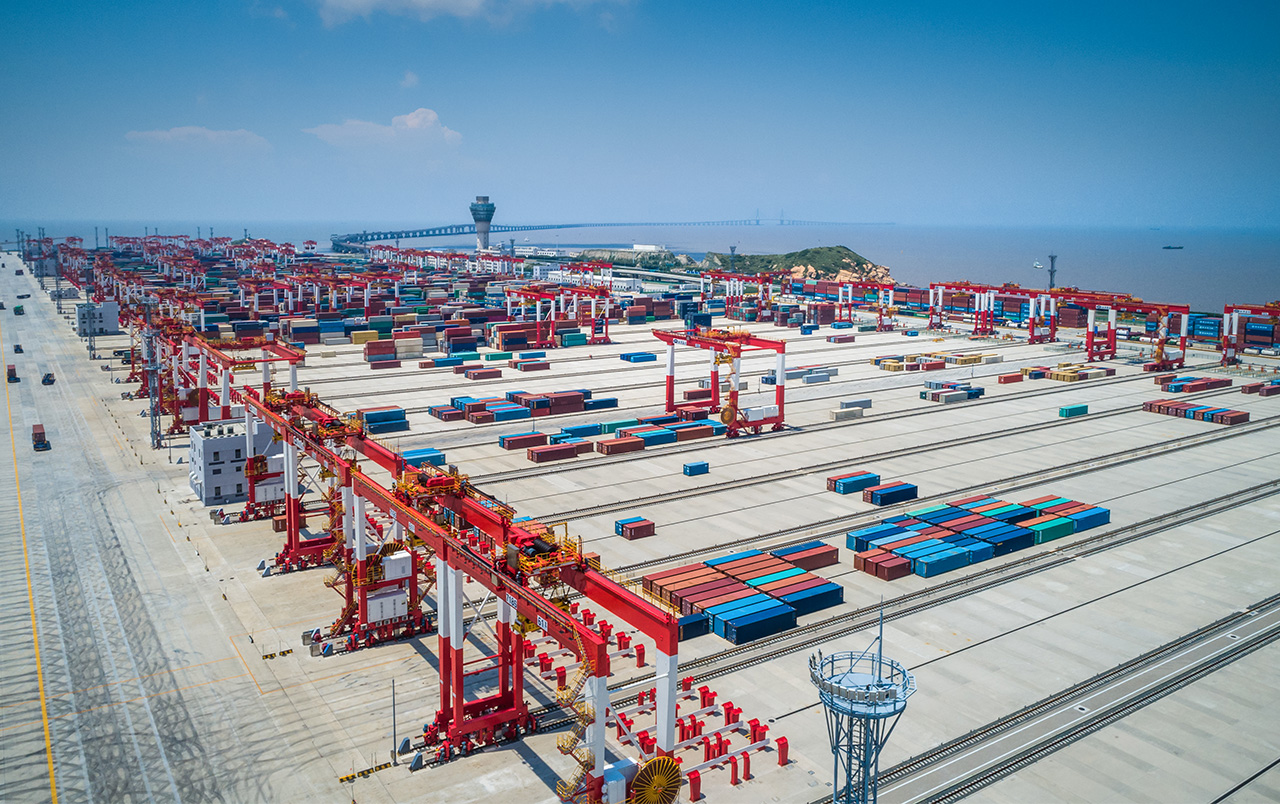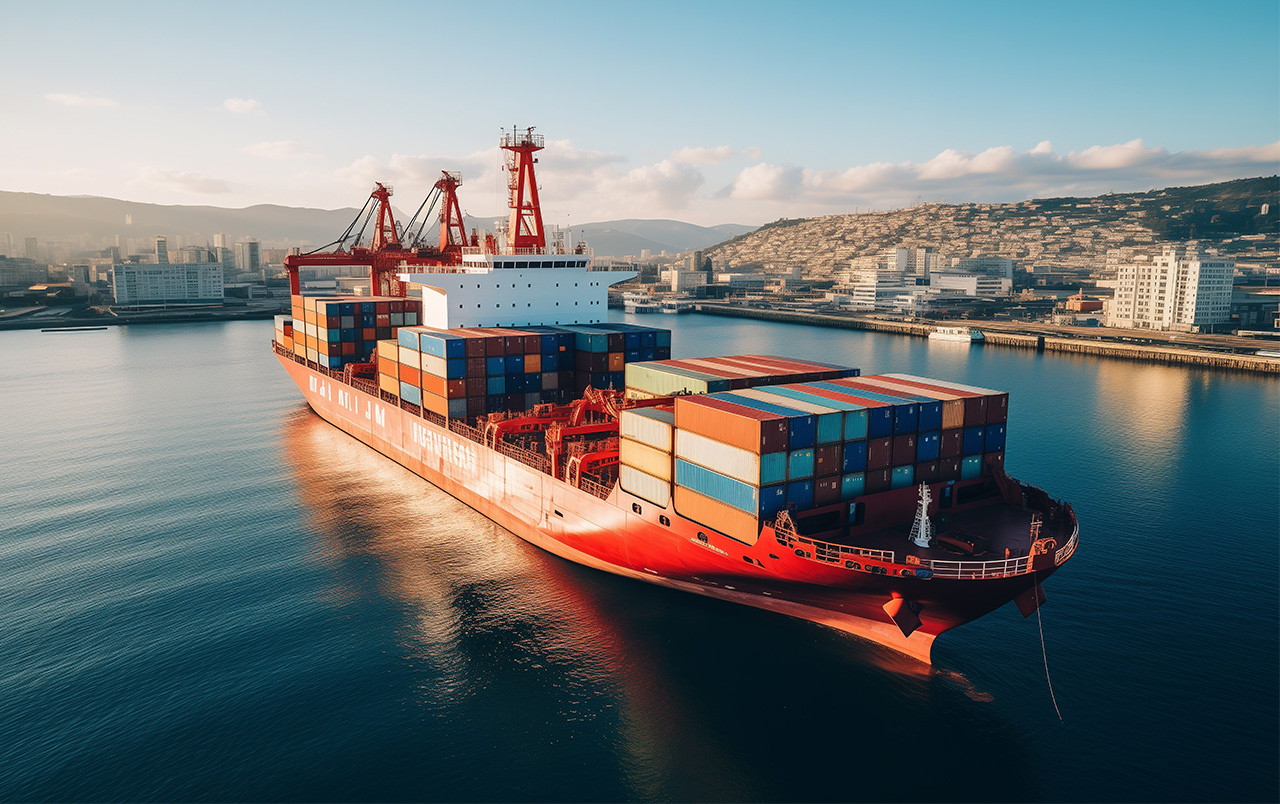
The efficiency and productivity of U.S. ports are pivotal to the nation's economy and the global supply chain. As critical hubs for international trade, these ports handle billions of tons of cargo annually, influencing markets worldwide. Recently, concerns have emerged regarding a potential slowdown in port operations across the United States. This analysis delves into the factors contributing to this phenomenon, examining the implications for commerce and proposing solutions. In particular, the adoption of advanced machinery such as the Heavy-Duty Reach Stacker is explored as a means to enhance efficiency and counteract these challenges.
The Current State of U.S. Ports
U.S. ports have historically been among the world's busiest, but recent data suggests a shift in this trend. According to the American Association of Port Authorities, cargo volume growth has slowed, with some major ports reporting a decline in throughput. The Port of Los Angeles, for instance, experienced a 6% decrease in container volume in the first quarter of this year compared to the previous year. This downturn raises concerns about the competitiveness of U.S. ports on the global stage.
Several factors contribute to this slowdown, including infrastructure limitations, technological lag, and external economic pressures. U.S. ports are facing increasing competition from modernized ports in Asia and Europe, which have invested heavily in advanced technologies and streamlined operations. The question arises: are U.S. ports equipped to meet the demands of contemporary global trade?
Infrastructure Challenges
Aging infrastructure remains a significant hurdle. Many U.S. ports were constructed decades ago and have not kept pace with technological advancements. The lack of deep-water berths limits the accommodation of larger, more efficient vessels. Furthermore, insufficient intermodal connections hinder the swift movement of goods from ports to inland destinations. The American Society of Civil Engineers graded the nation's ports with a "C+" in their latest infrastructure report card, indicating a pressing need for upgrades.
Technological Deficiencies
Technology plays a crucial role in port efficiency. While automation and digitization have revolutionized port operations globally, U.S. ports have been slow to adopt these innovations. The implementation of automated stacking cranes, automated guided vehicles, and advanced terminal operating systems is limited. This technological gap results in longer handling times and reduced capacity. However, equipment like the Reach Stacker for Ports offers a viable solution to enhance operational efficiency through advanced handling capabilities.
Economic and Global Trade Factors
Global economic shifts significantly impact U.S. port operations. The trade tensions between the U.S. and China have led to fluctuating trade volumes, as tariffs alter the flow of goods. Additionally, the ongoing effects of the COVID-19 pandemic have disrupted supply chains, leading to unpredictable cargo volumes and scheduling challenges. These external pressures contribute to congestion and inefficiencies, exacerbating the perception of a slowdown.
Moreover, competition from foreign ports is intensifying. Ports like Shanghai, Singapore, and Rotterdam have rapidly modernized, emphasizing efficiency and technological integration. They serve as logistical benchmarks, attracting shipping lines that prioritize speed and reliability. The inability of U.S. ports to match these advancements could result in a long-term decline in their global standing.
Labor Considerations
Labor dynamics play a significant role in port operations. The U.S. port industry is heavily reliant on a unionized workforce. While skilled labor is essential, labor disputes and contractual negotiations can lead to operational disruptions. Strikes and slowdowns over contract disagreements have historically caused significant delays. For instance, the 2014-2015 West Coast port slowdown resulted in estimated losses of $2 billion per day to the U.S. economy.
Additionally, there is resistance to automation from labor unions due to concerns over job security. This resistance hampers the adoption of technologies that could enhance efficiency. Balancing technological advancement with workforce implications is a delicate task that requires collaboration and forward-thinking strategies.
Technological Innovations as Solutions
Embracing technological innovation is essential to counteract the slowdown. The integration of advanced equipment and systems can significantly enhance port productivity. The deployment of automated guided vehicles, blockchain for secure and transparent transactions, and artificial intelligence for predictive maintenance are among the technologies with transformative potential.
Specifically, the implementation of state-of-the-art cargo handling equipment such as the Heavy-Duty Reach Stacker can improve the speed and safety of container movement. These machines are designed for high performance, capable of handling heavier loads with greater precision. By reducing turnaround times and increasing stacking efficiency, they directly contribute to alleviating port congestion.
Case Study: The Impact of Advanced Reach Stackers
International ports that have adopted advanced reach stackers report significant performance improvements. The Port of Antwerp, for example, incorporated a fleet of heavy-duty reach stackers and observed a 20% increase in container handling efficiency. This investment not only enhanced operational capacity but also reduced labor strain and minimized accidents due to improved safety features.
Similarly, the Port of Singapore's use of automated stacking cranes and reach stackers has been instrumental in maintaining its position as one of the world's busiest ports. These technologies enable 24/7 operations with minimal downtime, showcasing the benefits of embracing modern equipment.
Investment and Policy Considerations
Significant financial investment is required to modernize U.S. ports. Public funding, private investment, and public-private partnerships are mechanisms to secure necessary capital. The federal government's commitment to infrastructure, as outlined in recent legislative proposals, indicates potential support for these initiatives.
Policy reforms are also crucial. Streamlining regulatory processes can facilitate quicker adoption of new technologies. Incentives for innovation and modernization can encourage ports to implement necessary upgrades. Additionally, policies must address labor concerns by promoting retraining programs and ensuring that workforce development accompanies technological advancement.
Environmental Sustainability
Environmental considerations are increasingly important in port operations. The shift toward sustainable practices adds another layer of complexity to modernization efforts. Implementing green technologies, such as electric-powered reach stackers and renewable energy sources, aligns with global sustainability goals but requires additional investment.
The Environmental Protection Agency (EPA) has set targets for reducing emissions from port operations. Compliance necessitates upgrading equipment and altering operational practices. While challenging, these changes present an opportunity to modernize while contributing to environmental objectives.
The Role of Equipment Manufacturers
Equipment manufacturers are key partners in port modernization. Collaboration between ports and manufacturers can lead to tailored solutions that address specific operational challenges. Companies offering advanced machinery like the Reach Stacker for Ports contribute to enhancing efficiency and productivity.
These partnerships can also facilitate knowledge transfer and training, ensuring that port personnel are equipped to operate new technologies effectively. Manufacturers can provide ongoing support and updates, helping ports maintain cutting-edge operations. By aligning goals, both parties can benefit from improved performance and competitiveness.
Future Prospects and Recommendations
Looking ahead, the modernization of U.S. ports is not just an option but a necessity. To remain competitive and meet the demands of global trade, ports must adopt a multifaceted approach that includes technological innovation, infrastructure improvement, and policy reform. Implementing advanced equipment and systems will address inefficiencies and position U.S. ports as leaders in the industry.
Recommendations for stakeholders include:
Investing in state-of-the-art equipment such as heavy-duty reach stackers to enhance cargo handling capabilities.
Promoting collaboration between ports, manufacturers, and technology providers for customized solutions.
Securing funding through public and private channels to finance infrastructure and technological upgrades.
Engaging labor unions in dialogue to address concerns and develop workforce training programs.
Implementing environmentally sustainable practices to meet regulatory requirements and global standards.
Conclusion
The perceived slowdown of U.S. ports is a multifaceted issue that requires a comprehensive response. By understanding the underlying factors and embracing innovative solutions, it is possible to reverse this trend. The integration of advanced technologies, such as the Heavy-Duty Reach Stacker, can significantly enhance operational efficiency. Collaboration among stakeholders, investment in infrastructure, and a commitment to modernization are essential steps toward revitalizing U.S. ports. Addressing these challenges proactively will ensure that the nation's ports remain vital components of the global supply chain and continue to drive economic growth.
Related Blogs
-
 Have you ever wondered how ports move massive containers so quickly? Reach stackers are the machines behind the magic, combining power and precision to handle heavy loads. Learning how to operate a reach stacker is critical for safety and efficiency. Mistakes can cause accidents, equipment damage, or delays in port operations. This guide is made for port workers, warehouse staff, and logistics personnel. In this post, you’ll learn how to operate a reach stacker safely and step by step, even if you're just starting out.blogs
Have you ever wondered how ports move massive containers so quickly? Reach stackers are the machines behind the magic, combining power and precision to handle heavy loads. Learning how to operate a reach stacker is critical for safety and efficiency. Mistakes can cause accidents, equipment damage, or delays in port operations. This guide is made for port workers, warehouse staff, and logistics personnel. In this post, you’ll learn how to operate a reach stacker safely and step by step, even if you're just starting out.blogs -
 Have you ever wondered how ports move massive containers so quickly? It’s not magic—it’s the reach stacker. These powerful machines play a key role in lifting, moving, and stacking containers. They keep goods moving in ports, terminals, and warehouses every day. In this post, you’ll learn what a reach stacker does, why it's important in logistics, and how it improves container handling operations worldwide.
Have you ever wondered how ports move massive containers so quickly? It’s not magic—it’s the reach stacker. These powerful machines play a key role in lifting, moving, and stacking containers. They keep goods moving in ports, terminals, and warehouses every day. In this post, you’ll learn what a reach stacker does, why it's important in logistics, and how it improves container handling operations worldwide. -
 Can a SANY reach stacker really replace a crane? This question has become increasingly relevant in logistics and port operations. SANY reach stackers are widely used for container handling, but many wonder if they can also perform crane-like functions. In this post, we’ll explore whether a SANY reach stacker can be used as a crane, highlighting its versatility in container handling and other lifting tasks. You'll learn about its key features, applications, and advantages in situations where traditional cranes may not be practical.
Can a SANY reach stacker really replace a crane? This question has become increasingly relevant in logistics and port operations. SANY reach stackers are widely used for container handling, but many wonder if they can also perform crane-like functions. In this post, we’ll explore whether a SANY reach stacker can be used as a crane, highlighting its versatility in container handling and other lifting tasks. You'll learn about its key features, applications, and advantages in situations where traditional cranes may not be practical.









